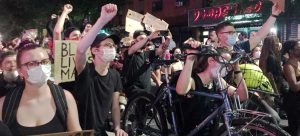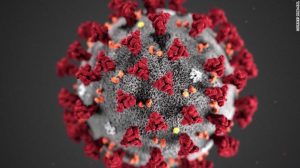Seized from their parents, sent to the Reich to be Germanised, exploited as slave labourers, starved or frozen to death in Holocaust trains, experimented on, killed with phenol injections, or gassed and incinerated in death camps.
This was the fate of thousands of Polish children at the hands of the Germans.
Exactly 78 years ago today the Germans set about clearing all Poles from the Zamość region to make way for German and Ukrainian colonists.
 Starting on November 27, 1942, families were driven out of their homes under threat of being shot. They were only allowed to take away the most important things.Public domain
Starting on November 27, 1942, families were driven out of their homes under threat of being shot. They were only allowed to take away the most important things.Public domain
The Zamość clearances, dubbed SS Sonderlaboratorium by the Germans, were an experimental first step in the Nazi Germany’s General Plan East, which envisaged the destruction and displacement of the entire Slavic population in the East to create living space, or Lebensraum, for the Aryan race.
The deportations started on the night of November 27, 1942. Families were driven out of their homes under threat of being shot. They were only allowed to take away the most important things.
The victims were taken to what the Germans called transit camps but were in fact concentration camps. Many prisoners died there, mainly of hunger.
In these camps, the Germans made selections. There were several categories: some were suitable to be exploited as slaves, while those of no use, including children, were sent to death camps for extermination. Children with Aryan facial features were taken to be germanised.
 All the children torn away from their families and thrown into the German terror machine are collectively known as the Children of the Zamość Region.archiwa.gov.pl
All the children torn away from their families and thrown into the German terror machine are collectively known as the Children of the Zamość Region.archiwa.gov.pl
The terror campaign lasted until March 1943. It is estimated that by that time around 110,000 Poles had been displaced from the Zamość region.
What made this episode of German barbarism even more tragic was the suffering of around 30,000 Polish children.
Separated from their parents and with no one to take care of them, they died like flies at every stage of their horrific ordeal. No one knows exactly how many died but estimates put the number of child victims at over 10,000.
 Separated from their parents and with no one to take care of them, they died like flies at every stage of their horrific ordeal. No one knows exactly how many died but estimates put the number of child victims at over 10,000.archiwa.gov.pl
Separated from their parents and with no one to take care of them, they died like flies at every stage of their horrific ordeal. No one knows exactly how many died but estimates put the number of child victims at over 10,000.archiwa.gov.pl
All the children torn away from their families and thrown into the German terror machine are collectively known as the Children of the Zamość Region.
The Germans chose Zamość for good reasons. They wanted to create a Germanic buffer along the border of the future Reich, which would protect against ‘harmful’ influences of the non-colonized East.
There were other reasons. Numerous manor farms in the area provided good conditions for settlement. In the Zamość region there were also concentrations of old German settlers, which could play a role in carrying out the colonization action in the area.
The Germans believed that the region’s population contained ‘German blood’, which they treated as a precious commodity. Colonists from Lorraine and Alsace had been brought to the area at the end of the 18th century as part of the Habsburg settlement policy.
 The Zamość clearances, dubbed SS Sonderlaboratorium by the Germans, were an experimental first step in the Nazi Germany’s General Plan East, which envisaged the destruction and displacement of the entire Slavic population in the East to create living space, or Lebensraum, for the Aryan race.Public domain
The Zamość clearances, dubbed SS Sonderlaboratorium by the Germans, were an experimental first step in the Nazi Germany’s General Plan East, which envisaged the destruction and displacement of the entire Slavic population in the East to create living space, or Lebensraum, for the Aryan race.Public domain
The plan was to bring colonists from Germany to take over the farms, but also to bring “recovered German blood” from the East.
The displacement action started in the Skierbieszów region. The Germans always followed the same routine. At night or in the morning, army, police or SS units surrounded a village and forced people to leave their homes.
The people were ordered to gather in one place normally within 20 minutes. The sick and elderly were murdered on the spot. Those who resisted or tried to escape were also murdered.
 Children of the Zamość Region selected for Germanisation.Public domain
Children of the Zamość Region selected for Germanisation.Public domain
The people were kept in their village for several hours, regardless of temperature or weather. In such conditions, without food or drink, many died, especially children.
Selection started in the villages, when a few people were ordered to remain to work for the incoming colonists, who were often waiting with their families nearby.
The remaining Poles were loaded onto trucks or carts and with a strong escort, in fear of partisans, taken to a transit camp.
Stanisława Teresa Syska, who was forced to leave her village of Skierbieszowa when she was ten, later recalled: “They started to knock on the windows and doors, the gruff German speech was proof that we were surrounded and that there was no rescue for us […] when the Germans came into the house, they gave us only 5 minutes to prepare and take some things and immediately pushed us out of the house, regardless of the children’s crying and my parents’ pleas.”
 Victims were sent to one of several camps set up in the region to process them. Among the worst was the camp in Zamość, pictured.Public domain
Victims were sent to one of several camps set up in the region to process them. Among the worst was the camp in Zamość, pictured.Public domain
Victims were sent to one of several camps set up in the region to process them. Among the worst was the camp in Zamość.
It consisted of a dozen or so barracks surrounded by barbed wire. Each of them was separated from the others also by wire, which led to the camp becoming known simply as ‘the wire’.
The conditions were terrible. Many barracks had no floors or ovens, which in winter conditions caused people to freeze. People had to sleep on bare ground. Washing was out of the question as there was no well. The food was no better. A whole day’s ration consisted of thin turnip soup, 150 grams of bread and half a litre of bitter coffee. The lack of hygiene, infestation of insects, hunger and the freezing cold decimated people, especially children.
 The lack of hygiene, infestation of insects, hunger and the freezing cold of the camps decimated people, especially children.Public domain
The lack of hygiene, infestation of insects, hunger and the freezing cold of the camps decimated people, especially children.Public domain
The horror of the camp was amplified by the terror of the SS. Guards set dogs on prisoners and shot them for approaching the wire. The commandant personally murdered many children.
Selections were carried out upon arrival at the camp, during which children were cruelly separated from their mothers, who were often beaten or even murdered. The Germans were careful to lead the men way at an earlier stage as they often tried to protect their family members.
Leonard Szpuga, a displaced farmer from Topólcza, witnessed these events: “The separation of mothers from their children shocked me most. The worst torture I endured was nothing compared to this sight.
The Germans took the children, and if there was any resistance, even very little resistance, they beat the mothers and children until they bled. Then there was squealing and crying. Often mothers turned to the Germans for food for hungry and frozen children. The only thing they could get was a blow with a stick or a whip. I saw the Germans kill small children.”
 Czeslawa Kwoka has become a symbol of the Children of the Zamość Region sent to Auschwitz. Her photograph taken upon arrival shows her terrified face after being beaten with a whip by a guard to force her obedience.Public domain
Czeslawa Kwoka has become a symbol of the Children of the Zamość Region sent to Auschwitz. Her photograph taken upon arrival shows her terrified face after being beaten with a whip by a guard to force her obedience.Public domain
People were divided into four groups according to their ‘racial value’. The first and second groups included Polish families of German origin or with a mixture of German blood. These groups were to be moved to Łódź.
Others were classified as suitable for slave labour in the Reich on to work on farms in the General Government. The final group was the most tragic. Made up of old people and children, they were destined for extermination in death camps.
Children endured the hardships of journeys in closed cattle wagon especially hard. Already in poor condition and hungry from their stay in the camp, transported without care and supplies, they fell ill and died in massive numbers on the way to their destination.
 The youngest children were the most valuable for the Germans, as they were the easiest to Germanise.archiwa.gov.pl
The youngest children were the most valuable for the Germans, as they were the easiest to Germanise.archiwa.gov.pl
Many of them were found dead with frozen limbs, cheeks and noses. The wagons were so crowded with children that there was often only room to stand for several days. The lack of water, fresh air and toilet facilities led to mass fainting.
Train transports were often the only chance for Polish society to rescue the children. The news of the suffering of the Zamość children spread rapidly throughout occupied Poland and underground organisations tried to help as best they could by providing food, sheets and medicines to children held at transit camps.
The Polish underground blew up rail tracks, thanks to which many transports to Auschwitz did not reach their destination. Railwaymen poured sand into the rolling bearings of wagons causing them to overheat. While repairs were carried out, railwaymen and locals tried to buy or steal children from the Germans.
One underground group released the following appeal: “We call on all the people living by the rail tracks and stations to be alert and to find out where the children appear. In case of detection, try to get the children out of the wagons as quickly and efficiently as possible.
 The camp in Zamość consisted of a dozen or so barracks surrounded by barbed wire. Each of them was separated from the others also by wire, which led to the camp becoming known simply as ‘the wire’.archiwa.gov.pl
The camp in Zamość consisted of a dozen or so barracks surrounded by barbed wire. Each of them was separated from the others also by wire, which led to the camp becoming known simply as ‘the wire’.archiwa.gov.pl
“Either buy them or steal them. Take care of the children immediately. Share them among families. Act calmly, with caution, save the children! Save the children!”
Tens of thousands of Poles volunteered to take rescued children into their homes.
Many children did reach Auschwitz-Birkenau though. The first transport of 640 Poles displaced from the Zamość region arrived there during the night of December 12-13, 1942. They were imprisoned in sealed carriages. 14 people managed to escape from the transport. In total, 1,300 victims from the Zamość region were sent to Auschwitz, 80 percent of whom died.
 Children of the Zamość Region after being rescued by Poles. Tens of thousands of Poles volunteered to take rescued children into their homes.Public domain
Children of the Zamość Region after being rescued by Poles. Tens of thousands of Poles volunteered to take rescued children into their homes.Public domain
Czeslawa Kwoka has become a symbol of the Children of the Zamość Region sent to Auschwitz. Her photograph taken upon arrival shows her terrified face after being beaten with a whip by a guard to force her obedience.
She was born on August 15, 1928 in Wólka Zlojecka in the Zamość region. She arrived in Auschwitz on December 13, 1942 in a transport of 318 women. The circumstances of her death were not recorded.
Another group of child victims were those who were selected as being suitable for germanisation. A panel of German doctors examined children with Nordic characteristics. They were tested for their appearance, skull structure, space between the eyes, hair and eye colour. The children qualified for germanisation had a wooden plaque hung around their necks bearing the symbol KI, or Kinderaktion, and a number. They were then ruthlessly separated from the elderly and taken away never to be seen again.
 In total, 1,300 victims from the Zamość region were sent to Auschwitz, 80 percent of whom died.xiquinhosilva/CC BY 2.0
In total, 1,300 victims from the Zamość region were sent to Auschwitz, 80 percent of whom died.xiquinhosilva/CC BY 2.0
Julian Grudzień was four years old at the time. He remembers the selection scene in the German camp in Zamość.
“They undressed me there. A doctor looked into my eyes. He ordered me to raise my hands… I had blue eyes. They hung a plaque around my neck. I was to be sent to the Reich for germanisation,” he later recalled.
Julian was lucky as a Polish doctor helped him stay with his mother and they survived the war together.
The youngest children were the most valuable for the Germans, as they were the easiest to Germanise. Infants who were not yet able to speak were taken in straight away by German families, who were often unaware that the adopted children came from Poland.
The older children were sent to transitional centers where they were not only taught German and were banned from speaking Polish on pain of severe punishment, but everything was done to erase the memory of their earlier lives. It was only after this barbaric process that Polish children with changed names, false birth certificates, separated from siblings, were sent to German families. All traces of their Polishness were carefully obliterated.
 Two children after being rescued.czas niewoli czas śmierci
Two children after being rescued.czas niewoli czas śmierci
It is not known how many children were stolen in this way. Dr. Agnieszka Jaczyńska from the Institute of National Remembrance in Lublin has said: “Neither I nor, as far as I know, any historian has found any document or documents from which it would be possible to determine exactly how many children from the Zamość region were robbed for germanization purposes.”
Nor is there any record of any children returning to the Zamość region after being sent to Germany.
Eventually, the German colonisation plans came to halt after the German defeats in the Soviet Union and intensified partisan action by the Polish underground against the German colonists.
The dreams of a thousand-year domination of the East turned to dust. But the trauma of brutal displacement did not disappear with the end of the war. It left a scar on those who survived for the rest of their lives and even to this day.




